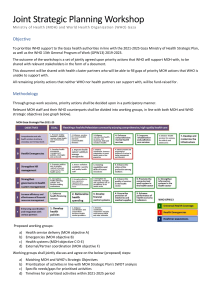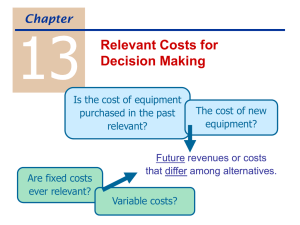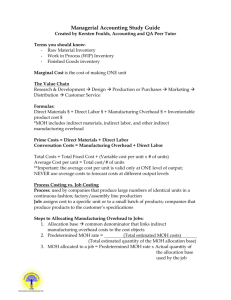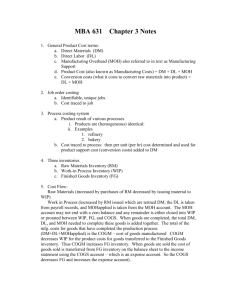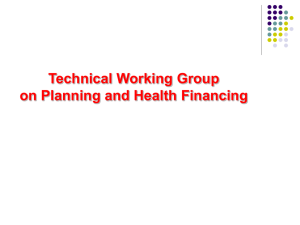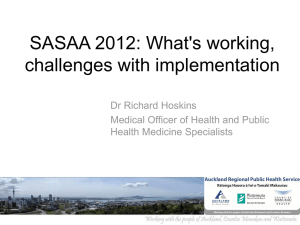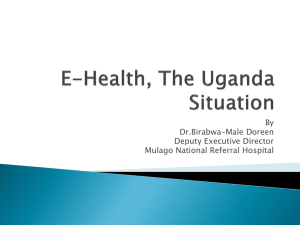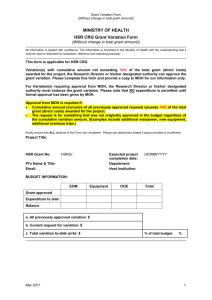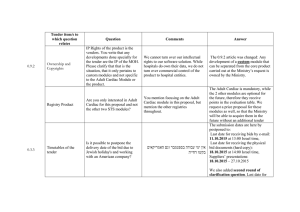Brief on Revision of EMR S & G to include PHC
advertisement
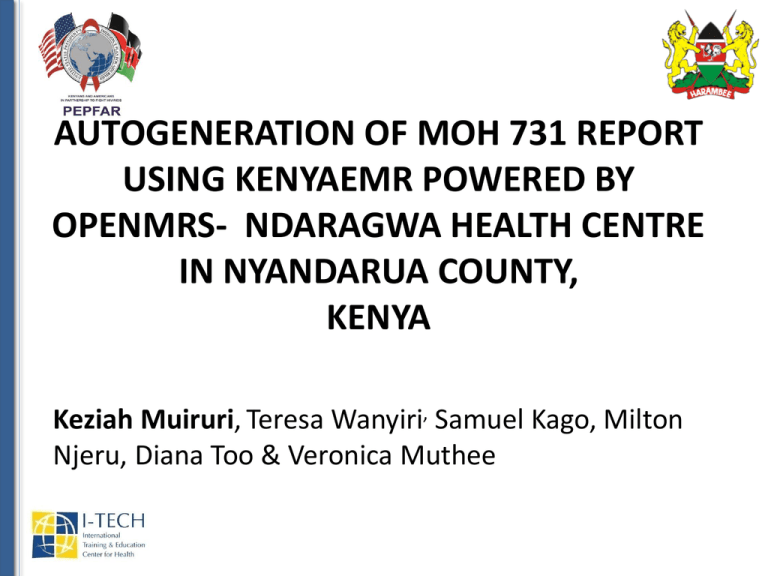
AUTOGENERATION OF MOH 731 REPORT USING KENYAEMR POWERED BY OPENMRS- NDARAGWA HEALTH CENTRE IN NYANDARUA COUNTY, KENYA Keziah Muiruri, Teresa Wanyiri, Samuel Kago, Milton Njeru, Diana Too & Veronica Muthee ISSUES • MOH 731 generated monthly by facilities offering HIV care services • Manual compilation and validation process poses a big challenge – data quality issues of incompleteness, inaccuracy, unreliability and untimeliness DESCRIPTION • The KenyaEMR , an open source EMR system developed by I-TECH, was installed in Ndaragwa Health Centre in August 2013 • Retrospective data entry was completed within two months • Point of care implementation commenced in October 2013 and real time data entry ensued • The facility auto-generated the first MOH 731 report in November 2013 which addressed the previous compilation & validation issues Description cont’ • Inter alia, the indicators reported in MOH 731 include:– Patients newly enrolled in care – Patients initiated on ART – Current patients on care – Current patients on ARV’s – Cumulative patients on care – Cumulative patients on ART – ART Net cohort at 12 months LESSONS LEARNT • The Electronic system has:– Aided in patient management and better followup – Eased monthly report generation burden • Reduced effort • Reduced time • Data quality issues substantially improved – Enabled the facility to focus more in enhancing data quality, promoting data use Lessons learnt cont’ • Data validation simplified – the system provides a line list of all patients for each indicator and hence easier and faster validation • The system however requires dedication – Health information – Health facility staff NEXT STEPS • Addition of modules for other services besides HIV care and treatment as well as their reports – This will go a long way in easing data management and improve overall patient management • Linking the KenyaEMR to DHIS which will obviate the need for double data entry MOH 731- OCTOBER 2014 MOH 731- OCTOBER 2014 MOH 731- OCTOBER 2014 MOH 731- OCTOBER 2014 THANK YOU

